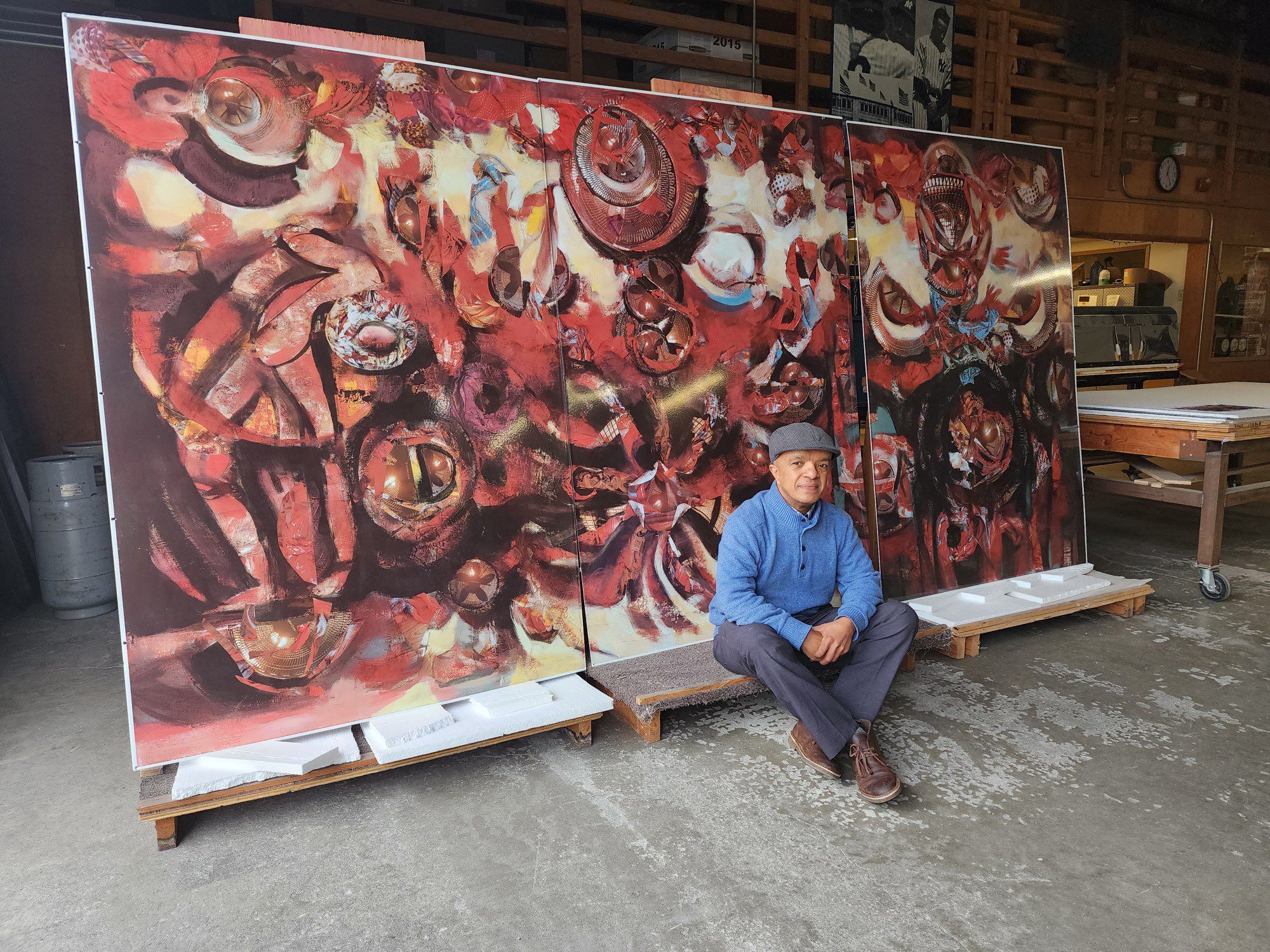
My first meeting as a member of the American’s for the Arts (AFTA) Emerging Leaders council meant flying to Lubbock, Texas and enjoying 70 degree weather in February — don’t hate me. Lubbock is located in the northwestern region of Texas, and while small compared to Seattle (p. 239,538 in 2013) has its own unique and thriving arts scene.
 We started our tour at the First Friday Art Trail. From 6-9 p.m. on the first Friday of every month the art trail is a free, self-guided, public art happening in the Lubbock Cultural District, encompassing a variety of art centers, museums, galleries and businesses. “Trail goers” can grab a map and explore, or jump aboard one of their free First Friday Trolleys and ride to the galleries along the route.
We started our tour at the First Friday Art Trail. From 6-9 p.m. on the first Friday of every month the art trail is a free, self-guided, public art happening in the Lubbock Cultural District, encompassing a variety of art centers, museums, galleries and businesses. “Trail goers” can grab a map and explore, or jump aboard one of their free First Friday Trolleys and ride to the galleries along the route.
For my first evening, our crew went to the Charles Adams Gallery, which showcases local and emerging Lubbock artists by the gallerist whose career was established in New York. Adams also started the Charles Adams Studio Project (CASP), to create affordable studios and live/work spaces for artists. The mission of CASP is to cluster artists at the Louise Hopkins Underwood Center for the Arts (LHUCA) by building and maintaining studio space for working artists. On our second day, Chad Plunket, the project manager for CASP, showed us CASP’s print and metal studio and we were able to tour the artist residencies. It’s always fascinating to see how cities and arts communities respond to changing economics and the needs of artists that provide vibrancy to their region.
We also visited the Lubbock Symphony Orchestra and got a glimpse into what it takes to run a mid-size orchestra. The most fascinating part for me was hearing how David Cho, the music director, curates the symphony’s season.
But back to business, our meeting was at LHUCA, a visual and performing arts campus, which acts as an arts hub for Lubbock artists and residents. My 14 diverse colleagues hail from all over the country and have varied positions from executive directors of arts non-profits to working at public sector arts agencies. They also brought a variety of interesting perspectives to the discussion. As a cohort we delved into what it means to be an emerging leader and how to bring equity into the arts administration field. Over the course of 16 hours, we enjoyed a lively discussion, brainstormed and came away with a number of plans for the next session. At the end of our meeting I had contributed some fresh ideas and received copious strategies for local issues.
Looking back at my whirlwind trip, I am reminded of the role art has in placemaking and being the catalyst for affordable housing and livability in a community. I’m excited to be part of AFTA’s Emerging Leaders council and what we can do to help advocate for and support leaders and individuals in the arts.
From the journal of Elisheba Johnson, executive and commission liaison.
Photo credit: Lindsay Tucker So


